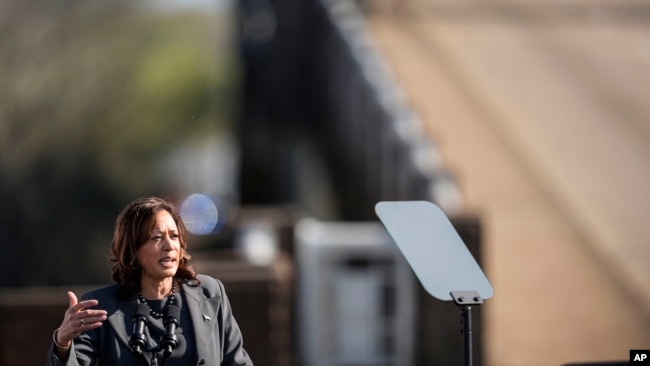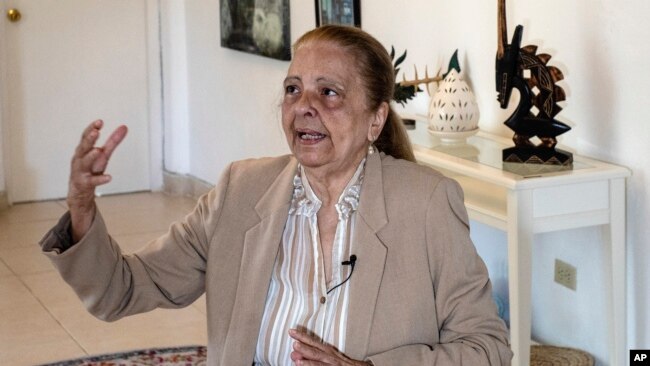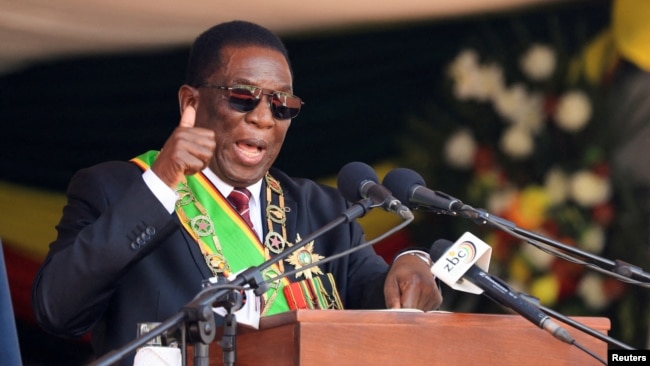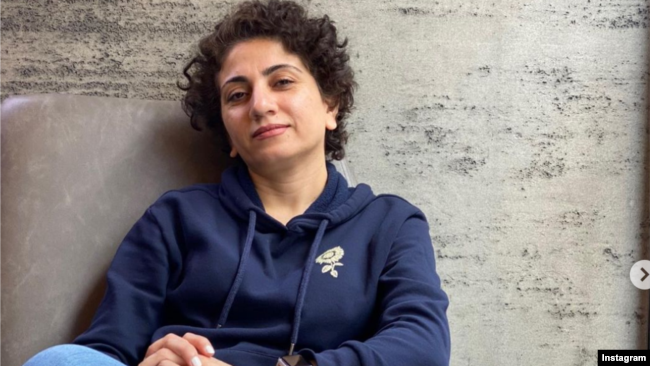[인터뷰: 천체물리학자 맥도웰 박사] “북한, 저궤도 위성 진입 목표…서구 저성능 상업위성 수준”
[Interview: Astrophysicist Dr. McDowell] "North Korea aims to enter a low-orbit satellite..."Western low-performance commercial satellites"
페이지 정보
작성자 조은정 작성일 23-05-30 00:55 댓글 0본문
![[인터뷰: 천체물리학자 맥도웰 박사] “북한, 저궤도 위성 진입 목표…서구 저성능 상업위성 수준” [인터뷰: 천체물리학자 맥도웰 박사] “북한, 저궤도 위성 진입 목표…서구 저성능 상업위성 수준”](https://gdb.voanews.com/01000000-0aff-0242-fceb-08db6074ce77_w650_r1.png)


Embed share
6] Embed share
[인터뷰: 천체물리학자 맥도웰 박사] “북한, 저궤도 위성 진입 목표…서구 저성능 상업위성 수준”
[Interview: Astrophysicist Dr. McDowell] "North Korea aims to enter a low-orbit satellite..."Western low-performance commercial satellites"
Embed share
8] Embed share
The code has been copied to your clipboard.
코드가 클립보드에 복사되었습니다.
width px height px
width px height px
The URL has been copied to your clipboard
URL이 클립보드에 복사되었습니다
No media source currently available
현재 사용 가능한 미디어 소스가 없습니다
0:00 0:16:38 0:00
0:00 0:16:38 0:00
다운로드
Download
- 240p | 37.4MB
240p | 37.4MB - 360p | 53.4MB
360p | 53.4MB - 480p | 78.4MB
480p | 78.4MB - 720p | 232.6MB
720p | 232.6MB - 1080p | 244.3MB
1080p | 244.3MB
조너선 맥도웰 박사 하버드-스미소니언 천체물리학센터 연구원
Dr. Jonathan McDowell, Harvard-Smisonian Center for Astrophysics
북한의 첫 군사정찰위성 발사가 초읽기에 들어간 가운데 북한이 고도 500km의 저궤도에 위성을 진입시키는 것을 목표로 할 것이라고 하버드-스미소니언 천체물리학센터의 조너선 맥도웰 박사가 전망했습니다. 맥도웰 박사는 29일 VOA 와의 화상 인터뷰에서 이같이 말하며 북한 위성의 성능은 서구의 저성능 상업위성 수준이라고 평가했습니다. 맥도웰 박사는 북한이 앞으로 정지궤도를 목표로 대형 발사체를 실험할 것으로 예상한다며, 그 첫번째 움직임을 올해 말에 볼 수 있을 것이라고 말했습니다. 조은정 기자가 맥도웰 박사를 인터뷰했습니다.
Dr. Jonathan McDowell of the Harvard-Smisonian Center for Astrophysics predicts that North Korea will aim to launch its first military reconnaissance satellite into a low-orbit orbit at an altitude of 500 kilometers. Dr. McDowell said in a video interview with VOA on the 29th that the North Korean satellite's performance is comparable to that of a low-performance commercial satellite in the West. Dr. McDowell said he expects North Korea to test large projectiles in geostationary orbit in the future, and that the first move could be seen later this year. Reporter Cho Eun-jung interviewed Dr. McDowell.
기자) 북한이 31일부터 내달 11일 사이에 인공위성을 발사하겠다고 밝혔습니다. 일본 정부는 잔해물 등의 낙하가 예상되는 지점 3곳을 발표했는데요. 낙하 예상지점을 감안하면 북한 위성 발사의 궤적이 어떻게 될까요?
Reporter: North Korea said it would launch a satellite between the 31st and the 11th of next month. The Japanese government announced three locations where debris and other debris are expected to fall. Considering the expected drop point, what will be the trajectory of North Korea's satellite launch?
맥도웰 박사) 사실 경고구역만으로는 조금 불분명합니다. 북한 발사장에서 남서쪽으로 한국 서쪽 바다로 발사하는 것 같은데, 1단 로켓 낙하 이후에는 방향을 바꿔 남동쪽으로 향해서 오키나와 상공 약 500km를 지나갈 것으로 보입니다. 경고구역만으로 우리가 알 수 없는 것은 2단 로켓 낙하 이후 움직이는 방향입니다. 2단 로켓과 같은 방향으로 계속 갈 수도 있고 또 다시 방향을 틀어 필리핀 상공을 지나 태양동기극궤도로 날아갈 수도 있습니다. 발사가 성공한다면 500km 상공의 궤도에 진입하고 대략 극궤도(polar orbit)에 올라갈 것으로 예상하지만 정확한 것은 발사를 지켜봐야 알 수 있습니다.
Dr. McDowell: Actually, the warning area alone is a little unclear. It seems to be firing southwest of the North Korean launch site into the western sea of South Korea, and after the first-stage rocket drop, it is expected to change direction and pass about 500 kilometers over Okinawa toward the southeast. What we don't know from the warning area alone is the direction of movement after the fall of the second stage rocket. It can continue in the same direction as a two-stage rocket, or it can turn again and fly over the Philippines into a solar synchronous orbit. If the launch is successful, it is expected to enter an orbit of 500 kilometers and reach a roughly polar orbit, but the exact details will be known only after the launch.
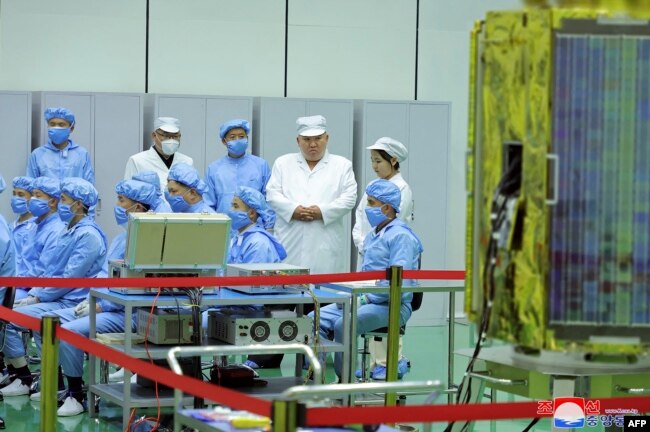
지난 16일 김정은 북한 국무위원장이 비상설 위성발사준비위원회 사업을 현지 지도했다며, 다음날 관영매체가 사진을 공개했다.
On the 16th, North Korean leader Kim Jong-un guided the project of the emergency satellite launch preparation committee, and the next day, the state media released the photo.
기자) 북한이 정찰위성을 태양동기극궤도에 올릴까요 아니면 저궤도(LEO·고도 500~1천500km)에 올릴까요?
Reporter: Will North Korea put its reconnaissance satellite in a solar synchronous orbit or a low orbit (LEO) at an altitude of 500-1500 km?
맥도웰 박사) 태양동기극궤도는 저궤도의 한 종류입니다. 북한이 경사각 97도, 고도 500km를 겨냥할 것으로 예상되는데 이것은 꼭 태양동기극궤도만 해당하는 것은 아닙니다. 표준적인 높이의 가장 일반적인 종류의 궤도이죠. 이 궤도에는 많은 위성들이 돌고 있고, 따라서 북한도 첩보 위성을 그 곳에 올리고자 할 것입니다.
Dr. McDowell: Solar synchronous orbit is a type of low orbit. North Korea is expected to target 97 degrees and 500 kilometers at an altitude, which is not necessarily the only solar synchronous orbit. It's the most common type of orbit at a standard height. There are a lot of satellites going around in this orbit, so North Korea will want to put spy satellites there.
기자) 24시간 연속으로 관측할 수 있는 정지궤도와 달리 태양동기극궤도는 특정 지역을 같은 시간에 통과하기 때문에 군사적으로 의미가 있으려면 여러 개의 첩보위성을 배치해야 한다는 지적도 있는데요.
Some point out that unlike geostationary orbit, which can be observed 24 hours in a row, solar synchronous orbit passes through certain areas at the same time, so multiple spy satellites must be deployed to make military sense.
맥도웰 박사) 북한이 첩보위성을 활용하는데 있어 가장 큰 어려움은 위성의 숫자가 아니라 위성 송신자료를 지상에서 수신할 수 있는 기회가 적다는 점입니다. 북한은 다른 우주항해 국가와 달리 전 세계에 선박과 추적소들이 없습니다. 그래서 북한은 위성이 북한 상공을 지나갈 때까지 기다려야만 위성과 교신하고 사진을 내려 받을 수 있을 것입니다. 운이 좋더라도 하루에 최대 몇 장만 확보할 수 있으며 이것이 북한 위성 시스템의 한계라고 생각합니다. 서구의 저성능 상업용 위성과 비슷한 해상도를 가졌을 것입니다. 미국 국가정찰국의 위성과 물론 경쟁이 되지 않을 것입니다.
[Dr. McDowell] The biggest challenge for North Korea in using spy satellites is that it has fewer opportunities to receive satellite transmission data on the ground, not the number of satellites. Unlike other space navigation countries, North Korea does not have ships and tracking stations around the world. So North Korea will only be able to communicate with the satellite and download photos if it waits for it to pass over the North. Even if you're lucky, you can only get up to a few copies a day, and I think that's the limitation of North Korea's satellite system. It would have a resolution similar to a low-performance commercial satellite in the West. Of course, it won't compete with the satellites of the National Intelligence Service.
기자) 북한 군사정찰위성 1호기의 해상도는 어느 정도일까요? 정찰 첩보 위성으로 쓰려면 1m 이하 해상도인 ‘서브 미터’급은 돼야 하는데요.
Reporter: What is the resolution of North Korea's military reconnaissance satellite No. 1? In order to use it as a reconnaissance spy satellite, it must be at the level of 'submeter' with a resolution of less than 1m.
맥도웰 박사) 아마도 기껏해야 1990년대 한국이 발사했던 우리별 위성과 비슷한 수십 미터 정도의 해상도일 것이라고 생각합니다. 더 성능이 떨어져서 해상도가 100m 정도일 수도 있죠. 북한이 정교한 카메라 기술을 확보할 수 있다면 해상도가 몇 미터까지도 내려갈 수 있습니다. 그럼에도 우리가 ‘구글 어스’를 통해 접할 수 있는 ‘서브 미터’ 기술은 북한이 없을 것입니다.
Dr. McDowell: I think it's probably a few tens of meters of resolution, at best, similar to our star satellite that Korea launched in the 1990s. It's even less powerful, so the resolution could be about 100 meters. If North Korea can secure sophisticated camera technology, the resolution could go down to several meters. Nevertheless, there will be no "submeter" technology that we can access through "Google Earth."
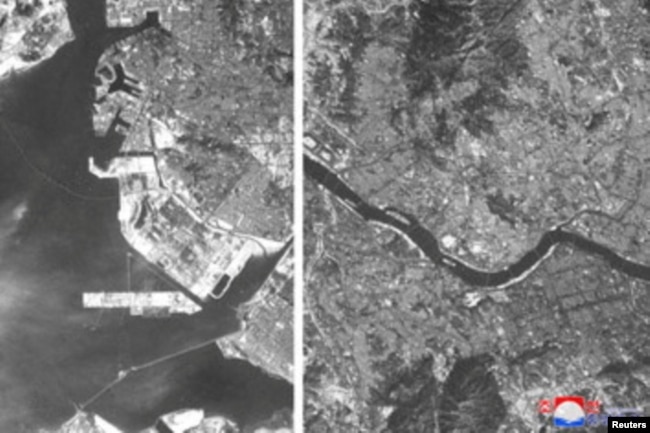
북한이 지난해 12월 정찰위섬 시험을 했다며 서울과 인천 일대의 위성사진을 공개했다.
North Korea released satellite images of Seoul and Incheon in December last year, saying it conducted a reconnaissance island test.
기자) 위성이 북한 상공을 지나갈 때만 자료를 수신할 수 있다고 하셨는데 다른 나라들에 비해서 역량이 많이 떨어지는 것 아닙니까?
Reporter: You said you can only receive data when satellites pass over North Korea, but isn't it a lot less capable than other countries?
맥도웰 박사) 위성이 다시 북한 상공으로 돌아오는 것은 하루에 두 번 정도입니다. 위성이 북한을 통과하는 건 10분 정도인데 그 때 교신할 수 있습니다. 서구의 일반적인 대학 위성 수준이죠. 예를 들어 대학에 큐브샛(초소형 위성)과 교신할 수 있는 지상국이 하나만 있다면 큐브샛이 돌아올 때까지 기다려야만 교신할 수 있는 것이죠. 북한은 중계위성 등 서방의 보다 포괄적인 통신 방식을 보유하고 있지 않습니다.
[Dr. McDowell] The satellite returns to the skies over North Korea about twice a day. It takes about 10 minutes for a satellite to pass through North Korea, and it can communicate then. It's like a typical university satellite in the West. For example, if a university has only one ground station that can communicate with a CubeSat, it has to wait until it returns. North Korea does not have a more comprehensive Western communication system, such as a relay satellite.
기자) 그러니까 북한 위성은 큐브샛 수준이라는 거네요.
So the North Korean satellite is like CubeSat.
맥도웰 박사) 작은 위성들과 비슷한 수준입니다. 미국 민간우주업체 플래닛 랩스의 ‘스카이샛’이나 미국의 ‘블랙 스카이’와 비슷한데 송수신 능력은 더 떨어지죠. 북한의 송수신 능력은 큐브샛 수준이고, 정보 역량은 중간 해상도의 상업용 위성과 비슷할 것입니다.
[Dr. McDowell] It's about the same level as small satellites. It's similar to Planet Labs' "SkySat" or US's "Black Sky," but it's less capable of transmitting and receiving. North Korea's transmission and reception capabilities will be comparable to that of a commercial satellite with medium resolution, and its intelligence capabilities will be similar to that of a cube.
기자) 북한 위성 잔해물 등의 낙하가 예상되는 지점 중 두 곳은 한반도 근처 서해와 나머지 한 곳은 필리핀 해상인데요. 낙하지점을 통해 북한 위성발사체에 대해 무엇을 알 수 있을까요?
Reporter: Two of the places where North Korean satellite debris is expected to fall are the West Sea near the Korean Peninsula and the other is the Philippine Sea. What can we learn about North Korea's satellite launch vehicle from the drop point?
맥도웰 박사) (북한이 공개한 사진을 토대로) 위성이 200kg 급이라는 점을 감안하면 이 위성을 궤도에 올리기 위해서는 큰 로켓이 필요합니다. 이 로켓이 상공을 지나가는 것을 불쾌해 할 국가들을 피해야 하기 때문입니다. 일본 본토와 한국 상공을 피하려는 것입니다. 그래서 남서쪽으로 선회해서 한국 서해 상공을 통과한 다음 필리핀 동쪽으로 이동하는 것입니다. 타이완이나 필리핀에 잔해가 떨어지지 않도록 말입니다.
[Dr. McDowell] Given that the satellite weighs 200 kilograms, a large rocket is needed to get it into orbit. This is because we should avoid countries that would be offended by the rocket passing through the sky. It is to avoid the Japanese mainland and the Korean skies. So you turn southwest, pass over the Korean West Sea, and then move east of the Philippines. So that debris doesn't fall into Taiwan or the Philippines.
기자) 북한이 효과적이고 본격적인 위성체계를 구축하기까지 얼마나 걸릴까요?
Reporter: How long will it take for North Korea to build an effective and full-fledged satellite system?
맥도웰 박사) 위성 프로그램 개발 초기에는 위성을 작동하고 자료를 분석하는 법을 익히는 데 시간이 걸립니다. 북한은 아직 연습하는 기간이죠. 앞으로 개발 속도는 북한이 얼마나 자금과 자원을 투자하는 가에 달렸습니다. 7년에 한 번씩 위성을 발사한다면 별다른 진전이 없을 것입니다. 하지만 이번 발사 이후로 몇 달에 한 번씩 연속 발사가 이뤄지면 북한은 매우 빠르게 역량을 구축할 수 있을 것입니다. 북한이 앞으로 얼마나 정기적으로 위성 프로그램을 유지하는 지가 관건입니다.
Dr. McDowell) In the early stages of satellite program development, it takes time to learn to operate satellites and analyze data. North Korea is still practicing. The speed of development in the future depends on how much money and resources North Korea invests. If you launch a satellite every seven years, you won't make much progress. However, if a series of launches are made every few months since this launch, North Korea will be able to build its capabilities very quickly. The key is how regularly North Korea maintains its satellite program in the future.
기자) 북한의 다음 개발 수순은 어떻게 전망하십니까?
Reporter: What do you think of North Korea's next development process?
맥도웰 박사) 우선은 정기적인 위성 발사를 해야 할 것입니다. 또한 북한은 정지궤도 위성을 발사하겠다는 언급도 한 바 있습니다. 약 500km 상공의 저궤도 위성이 아닌 3만6천km의 정지궤도 위성을 개발하는 것이죠. 이를 위해서는 더욱 큰 발사체가 필요하고 아마도 ICBM ‘화성-15’형을 기반으로 할 것입니다. 북한은 서해에 새로운 발사대도 만들고 있는데 올해 말에 완료 될 것 같습니다. 저는 정지궤도를 목표로 대형 발사체를 실험할 것으로 예상합니다. 이를 통해 북한은 정찰 위성, 중계 위성, 통신 위성, 기상 위성, 군사용 전략 통신 위성 등을 가질 수 있게 될 것입니다. 그 첫번째 움직임을 올해 말에 볼 수 있을 수도 있습니다.
Dr. McDowell: First of all, we'll have to do regular satellite launches. North Korea also said it would launch a geostationary satellite. We're going to develop a 36,000-kilometer geostationary satellite instead of a low-orbit satellite about 500 kilometers. This would require a larger projectile and would probably be based on the ICBM 'Mars-15' type. North Korea is also building a new launch pad in the West Sea, which is expected to be completed by the end of this year. I expect to experiment with a large projectile targeting geostationary orbit. This will allow North Korea to have reconnaissance satellites, relay satellites, communications satellites, weather satellites, and military strategic communications satellites. That first move could be seen later this year.
지금까지 하버드-스미소니언 천체물리학센터의 조너선 맥도웰 박사로부터 북한의 위성 개발 수준에 대해 들어봤습니다. 인터뷰에 조은정 기자였습니다.
So far, we've heard about the level of satellite development in North Korea from Dr. Jonathan McDowell of the Harvard-Smisonian Center for Astrophysics. Reporter Cho Eun-jung for the interview.
출처 : VOA한국
댓글목록 0
등록된 댓글이 없습니다.


